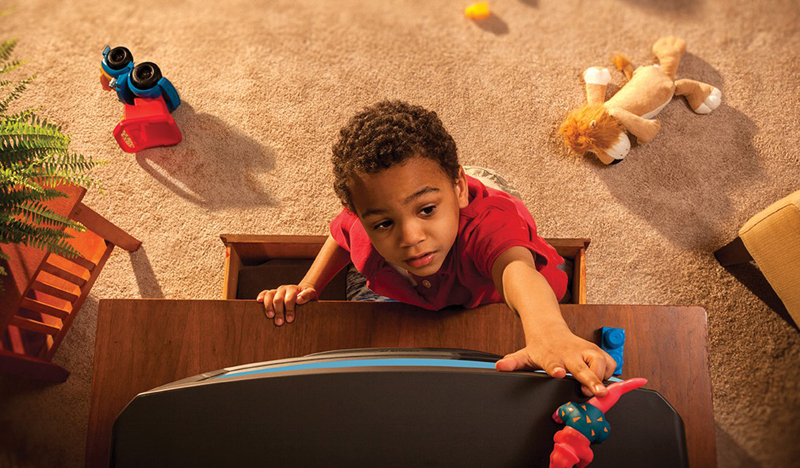Tips for Protecting Your Kids
Children are naturally curious. They climb, pull, and explore, often without any sense of the dangers around them. This makes securing furniture, appliances, and TVs in your home critical. Surprisingly, these common items can easily tip over, leading to severe injuries and, in the worst cases, death. However, with a few simple measures, you can minimize these risks significantly.
Why Tip-Over Hazards Matter
Imagine your child pulling up on a dresser to grab a toy placed just out of reach. Suddenly, the dresser teeters. It’s frightening to think about, but such scenarios happen every day. In fact, tip-over incidents are a leading cause of injury in young children. They are attracted to high shelves, open drawers, and reachable cords, all of which pose hidden dangers. Let’s explore how to make these everyday items safer.
Key Safety Tips to Prevent Tip-Overs
- Choose Stable, Low Furniture
Wide Bases Are Essential: Look for bookcases, cabinets, and dressers with wide, stable bases that sit directly on the floor. Furniture with narrow legs or wheels can be far less stable and more prone to tipping.
Design for Weight and Use: Choose pieces designed to hold the weight and items they’ll store. Heavier items, especially those prone to tipping, require a lower, more solid base.
- Secure Furniture to Walls
Anchors and Braces: Secure furniture to the wall using angle braces, anchors, or safety straps. If your furniture comes with specific safety attachments, be sure to use them. For older pieces, these can often be found at hardware stores. Aim to attach them to wall studs for better security.
Don’t Skip the Instructions: It may seem straightforward, but following the manufacturer’s instructions—especially for wall-secured furniture—is key. Improper installation can reduce effectiveness.
- Limit Temptations on Top of Furniture
Keep Climbing Items Out of Reach: Avoid placing enticing objects like toys, remotes, or plants on high surfaces. Children may try to reach them, leading to potential tip-overs.
Heavy Items on the Bottom: For shelves and drawers, keep heavy items at the bottom. This lowers the center of gravity and stabilizes the unit.
Additional Tips for Securing TVs
Securing TVs is essential, especially since older, bulkier models can pose a significant risk to children due to their heavy, front-loaded design. To keep them safe, place your TV on a low, stable stand that is properly rated for its weight and size. Using safety straps to secure the TV to either the stand or the wall adds another layer of protection, helping to prevent accidental tip-overs. Additionally, avoid placing heavy objects or enticing items, like remotes or toys, on top of the TV, as these could encourage children to reach up, potentially destabilizing it. By taking these precautions, you can greatly reduce the risk associated with TVs in your home, creating a safer environment for curious kids.
Teach Your Kids Not to Climb:
Educate children about the dangers of climbing on furniture and using open drawers as steps.
Open One Drawer at a Time:
Limit drawer access to one open drawer at a time to prevent accidental tipping.
Install Locks and Anchors: Drawer locks can be an effective deterrent. Also, securely attach the dresser to the wall with anchors or straps.
Don’t Use Dressers for TV Storage:
Dressers aren’t designed to support the weight of a TV, so avoid placing one on top.
Closing Thoughts
Simple Actions for Big Safety Gains
Making your home safe doesn’t require a complete overhaul; it just requires a few mindful changes. By securing furniture and appliances, keeping tempting objects out of reach, and teaching children about the dangers, you create a safer space for kids to play and explore.
Remember, it’s about anticipating curiosity and staying a step ahead. Small adjustments like these can go a long way in preventing accidents.
Conclusion
A Safer Home for Happier Play
Creating a child-safe home involves a series of proactive steps, but each one brings invaluable peace of mind. By securing furniture, stabilizing TVs, organizing cords, and choosing safe storage solutions, you’re effectively reducing the risk of tip-over accidents. Children are naturally curious explorers, and while we can’t always prevent their adventurous spirit, we can shape their environment to be as safe as possible.
These small yet impactful adjustments not only protect children from serious injury but also allow them—and you—to enjoy a safer, happier home. Safety begins with awareness, and a few mindful changes can make all the difference. Remember: in a home that’s secure, everyone can relax a little more, knowing that both playtime and everyday life are protected from unexpected hazards.


